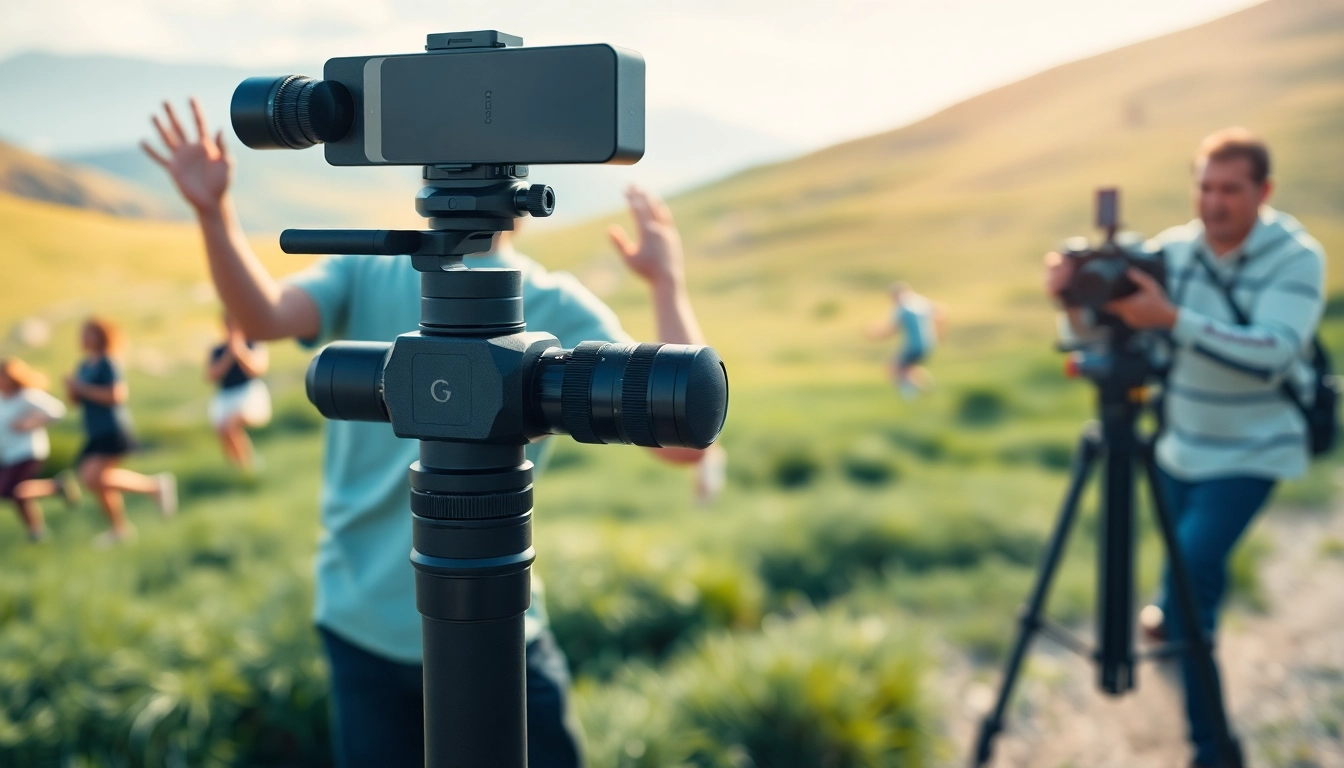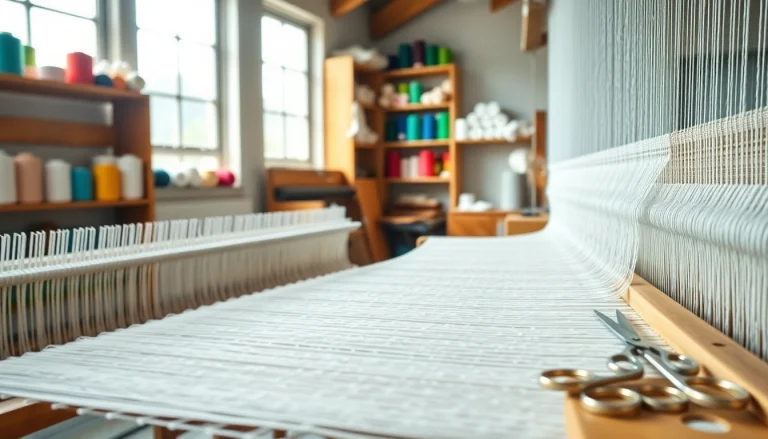Understanding Gimbal Stabilizer Technology
What is a Gimbal Stabilizer?
A gimbal stabilizer serves as a crucial tool for modern videographers and filmmakers, designed to enhance video quality by eliminating unwanted camera movements. In essence, a gimbal stabilizer is a device that uses motors and sensors to maintain a camera’s orientation on three axes: roll, pitch, and yaw. This technology allows users to seamlessly capture fluid motion shots, making it indispensable for anyone looking to create professional-standard videos. For filmmakers who prioritize slick and stable footage, investing in a gimbal stabilizer can be a game-changing decision.
How Gimbal Stabilizers Work
Understanding how gimbal stabilizers work entails delving into their core mechanics. Most modern gimbals employ three primary components: motors, sensors, and a control system. The sensors detect even the slightest movements or shakes while the motors then counteract these shifts by adjusting the position of the camera in real time. This advanced system ensures that regardless of how unsteady the operator may be, the camera remains perfectly steady and level, offering footage that is aesthetically pleasing and professional.
Types of Gimbal Stabilizers Available
There are several types of gimbal stabilizers that cater to different filming needs. They generally fall into three categories:
- Handheld Gimbals: Ideal for independent filmmakers or vloggers looking for mobility. These are usually lightweight and compact, making them easy to maneuver.
- Camera Gimbals: Designed for heavier DSLRs or mirrorless cameras, these stabilizers often come with advanced features for professional film production.
- Smartphone Gimbals: Tailored for smartphone users, these are portable and user-friendly, perfect for capturing quick, smooth videos on the go.
Benefits of Using a Gimbal Stabilizer
Improving Video Quality
One of the primary motives behind using a gimbal stabilizer is the significant improvement in video quality it provides. By eliminating jerks and jitters, gimbals ensure that the footage remains smooth and stable, even during dynamic movements. This means that whether you’re filming an action scene or a tranquil landscape, your final output will resonate with clarity and visual appeal.
Versatility in Filmmaking
Gimbal stabilizers are versatile tools that can be adapted to various filming scenarios. Whether you’re working on a documentary, a travel vlog, or a narrative film, gimbals can help you achieve the desired cinematic look. With features like automated movements and tracking modes, they allow filmmakers to explore creative filming techniques that might otherwise be challenging to execute manually.
Enhanced User Experience
Operating a gimbal stabilizer enhances the overall user experience for filmmakers. It allows users to focus more on their artistry while reducing the stress associated with camera handling. By leveraging gimbal technology, users can achieve complex shots and angles without the fear of shaky footage, freeing them to think creatively about their content.
Choosing the Right Gimbal Stabilizer
Factors to Consider When Selecting
When selecting a gimbal stabilizer, there are several factors to consider:
- Camera Compatibility: Ensure that the stabilizer can support the weight and dimensions of your camera setup.
- Axis Control: Look for gimbals with three-axis control for the best stabilization.
- Battery Life: Depending on your filming needs, consider a gimbal with long battery life to avoid interruptions during shoots.
- Ease of Use: A user-friendly interface can make setup and operation more streamlined, particularly for beginners.
Budget-Friendly Options
For aspiring filmmakers or casual users, budget can be a significant concern. Fortunately, there are various budget-friendly options available for gimbal stabilizers that don’t compromise on quality. These budget options often feature essential functionalities that help users achieve stable footage without breaking the bank, making them an excellent entry point into the world of stabilization technology.
High-End Models and Features
On the other end of the spectrum are high-end gimbal stabilizers that come with premium features, such as advanced control settings, enhanced payload capacities, and additional accessories for improved functionality. These models are typically geared towards professional filmmakers who demand the best in performance and reliability, often incorporating technologies that allow for greater flexibility in camera movement and filming techniques.
Best Practices for Operating a Gimbal Stabilizer
Setup and Calibration Tips
Setting up your gimbal stabilizer properly is critical for optimal performance. Begin by ensuring that your camera is securely attached and balanced on the gimbal. Calibration is also essential; most gimbals have an automatic calibration feature that compensates for weight distribution, keeping the camera steady while in motion. Take the time to familiarize yourself with the different modes of operation, which can significantly enhance your filming capabilities.
Common Mistakes to Avoid
Even with the best technology, inexperienced users can encounter pitfalls while operating a gimbal stabilizer. One common mistake is not balancing the camera properly, which can lead to uneven footage. Additionally, many users forget to adjust their grip, leading to unintentional jerks during movement. It’s crucial to practice operating the gimbal to become comfortable with its movement dynamics.
Maintaining Your Gimbal Stabilizer
Regular maintenance of your gimbal stabilizer can prolong its life and efficiency. Clean the motors and sensors occasionally to remove dust or debris that may affect performance, and always store the stabilizer in a protective case when not in use. Additionally, keeping the firmware updated ensures that your stabilizer operates with the latest features and improvements.
Future Trends in Gimbal Stabilizer Technology
Innovations to Watch
The landscape for gimbal stabilizers is rapidly evolving with ongoing technological advancements. One major trend includes the integration of lighter materials, making gimbals more portable and user-friendly. Enhanced connectivity features, such as Bluetooth controls and smartphone integration, are also becoming commonplace, allowing filmmakers to control their gimbals effortlessly from compatible devices.
Impact of AI on Gimbal Stabilizer Functionality
Artificial intelligence (AI) is set to revolutionize the functionality of gimbal stabilizers. AI-driven features may include automated tracking of subjects, gesture recognition, and optimized camera movements based on the scene being filmed. As these technologies become more prevalent, filmmakers will find increased creative opportunities and more significant efficiencies in their workflows.
The Rise of Mobile Gimbal Stabilizers
As mobile filmmaking continues to grow in popularity, gimbal stabilizers designed specifically for smartphones are emerging as essential tools. These mobile gimbals are typically compact and user-friendly, equipped with features that allow smartphone users to capture stunning, smooth video without requiring professional equipment. The ease of accessibility, alongside rising social media trends, drives the demand for these mobile solutions.








